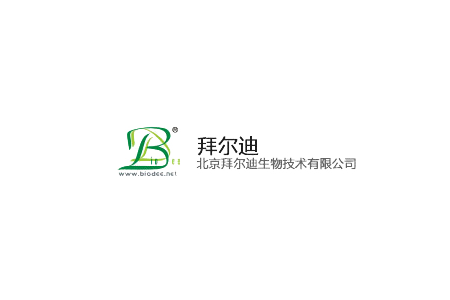

貨號
產(chǎn)品規(guī)格
售價
備注
BN40211R-100ul
100ul
¥2360.00
交叉反應(yīng):Mouse(predicted:Human,Rat,Cow) 推薦應(yīng)用:IHC-P,IHC-F,ICC,IF,ELISA
BN40211R-200ul
200ul
¥3490.00
交叉反應(yīng):Mouse(predicted:Human,Rat,Cow) 推薦應(yīng)用:IHC-P,IHC-F,ICC,IF,ELISA
產(chǎn)品描述
| 英文名稱 | PEX10 |
| 中文名稱 | 過氧化物酶體生物合成因子10抗體 |
| 別 名 | AV128229; Gm142; MGC1998; NALD; OTTHUMP00000001658; PBD6A; PBD6B; peroxin 10; Peroxin-10; Peroxisomal biogenesis factor 10; Peroxisome assembly protein 10; Peroxisome biogenesis factor 10; PEX10; PEX10_HUMAN; RING finger protein 69; RNF69; RP23-298E4.1. |
| 研究領(lǐng)域 | 細胞生物 信號轉(zhuǎn)導(dǎo) |
| 抗體來源 | Rabbit |
| 克隆類型 | Polyclonal |
| 交叉反應(yīng) | Mouse, (predicted: Human, Rat, Cow, ) |
| 產(chǎn)品應(yīng)用 | ELISA=1:5000-10000 IHC-P=1:100-500 IHC-F=1:100-500 ICC=1:100-500 IF=1:100-500 (石蠟切片需做抗原修復(fù)) not yet tested in other applications. optimal dilutions/concentrations should be determined by the end user. |
| 分 子 量 | 37kDa |
| 細胞定位 | 細胞膜 |
| 性 狀 | Liquid |
| 濃 度 | 1mg/ml |
| 免 疫 原 | KLH conjugated synthetic peptide derived from human PEX10:1-100/326 |
| 亞 型 | IgG |
| 純化方法 | affinity purified by Protein A |
| 儲 存 液 | 0.01M TBS(pH7.4) with 1% BSA, 0.03% Proclin300 and 50% Glycerol. |
| 保存條件 | Shipped at 4℃. Store at -20 °C for one year. Avoid repeated freeze/thaw cycles. |
| PubMed | PubMed |
| 產(chǎn)品介紹 | This gene encodes a protein involved in import of peroxisomal matrix proteins. This protein localizes to the peroxisomal membrane. Mutations in this gene result in phenotypes within the Zellweger spectrum of peroxisomal biogenesis disorders, ranging from neonatal adrenoleukodystrophy to Zellweger syndrome. Alternative splicing results in two transcript variants encoding different isoforms. [provided by RefSeq, Jul 2008] Function: Somewhat implicated in the biogenesis of peroxisomes. Subcellular Location: Peroxisome membrane. DISEASE: Peroxisome biogenesis disorder complementation group 7. The disease is caused by mutations affecting the gene represented in this entry. Disease description:A peroxisomal disorder arising from a failure of protein import into the peroxisomal membrane or matrix. The peroxisome biogenesis disorders (PBD group) are genetically heterogeneous with at least 14 distinct genetic groups as concluded from complementation studies. Include disorders are: Zellweger syndrome (ZWS), neonatal adrenoleukodystrophy (NALD), infantile Refsum disease (IRD), and classical rhizomelic chondrodysplasia punctata (RCDP). ZWS, NALD and IRD are distinct from RCDP and constitute a clinical continuum of overlapping phenotypes known as the Zellweger spectrum (PBD-ZSS). Peroxisome biogenesis disorder 6A. The disease is caused by mutations affecting the gene represented in this entry. Disease description:A fatal peroxisome biogenesis disorder belonging to the Zellweger disease spectrum and clinically characterized by severe neurologic dysfunction with profound psychomotor retardation, severe hypotonia and neonatal seizures, craniofacial abnormalities, liver dysfunction, and biochemically by the absence of peroxisomes. Additional features include cardiovascular and skeletal defects, renal cysts, ocular abnormalities, and hearing impairment. Most severely affected individuals with the classic form of the disease (classic Zellweger syndrome) die within the first year of life. Peroxisome biogenesis disorder 6B. The disease is caused by mutations affecting the gene represented in this entry. Disease description:A peroxisome biogenesis disorder that includes neonatal adrenoleukodystrophy (NALD) and infantile Refsum disease (IRD), two milder manifestations of the Zellweger disease spectrum. The clinical course of patients with the NALD and IRD presentation is variable and may include developmental delay, hypotonia, liver dysfunction, sensorineural hearing loss, retinal dystrophy and vision impairment. Children with the NALD presentation may reach their teens, while patients with the IRD presentation may reach adulthood. The clinical conditions are often slowly progressive in particular with respect to loss of hearing and vision. The biochemical abnormalities include accumulation of phytanic acid, very long chain fatty acids (VLCFA), di- and trihydroxycholestanoic acid and pipecolic acid. Similarity: Belongs to the pex2/pex10/pex12 family. Contains 1 RING-type zinc finger. SWISS: O60683 Gene ID: 5192 Database links: Entrez Gene: 5192 Human Entrez Gene: 668173 Mouse Omim: 602859 Human SwissProt: O60683 Human SwissProt: B1AUE5 Mouse Unigene: 732228 Human Unigene: 133114 Mouse Unigene: 111 Rat Important Note: This product as supplied is intended for research use only, not for use in human, therapeutic or diagnostic applications. |